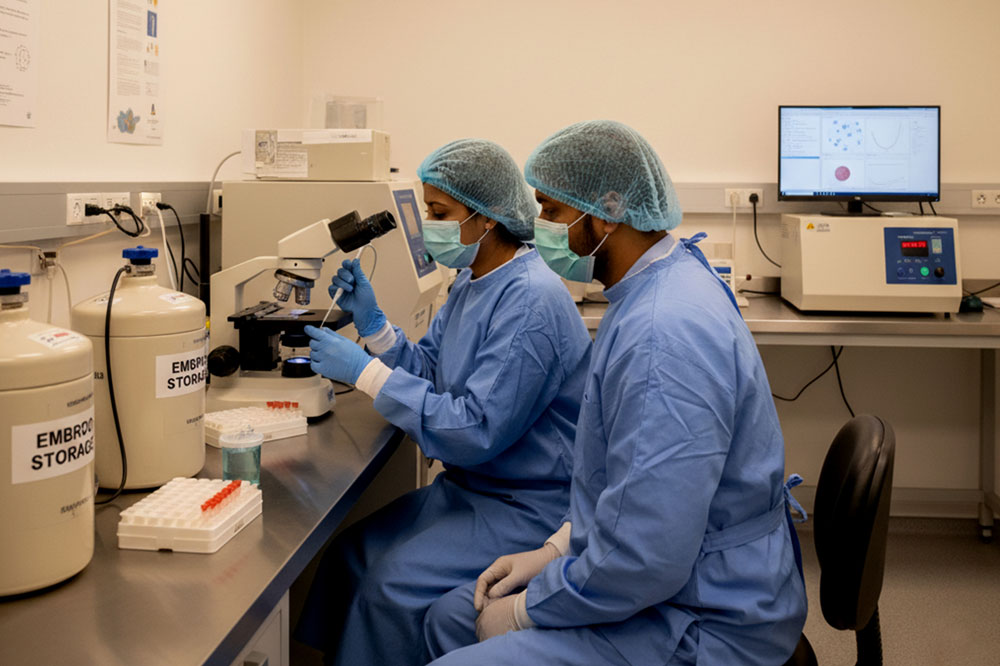The Role of Advanced Technology in Fertility Treatment
Offering new hope
In recent years, advancements in medical technology have transformed fertility treatment, offering new hope to couples struggling with infertility. These technologies are resulting in improved precision, safety and success rates which are helping the dreams of many couples come true. Among the most useful technological advancements are genetic testing, embryo freezing and 3D ultrasound imaging, which have revolutionised the way fertility specialists diagnose, monitor and treat patients. Let’s discuss them at length:

Genetic Testing – facilitating healthier outcomes
Genetic testing has today become an integral part of modern fertility care. Through techniques like Preimplantation Genetic Testing (PGT), embryos created via IVF can be screened for chromosomal abnormalities or specific genetic disorders before being transferred to the uterus. This not only increases the chances of a successful pregnancy but also significantly reduces the risk of miscarriage or inherited conditions.
For couples with a family history of genetic diseases or recurrent IVF failures, PGT is a godsend as it provides valuable insight into embryo health. By selecting genetically normal embryos, fertility specialists can ensure better implantation rates and healthier pregnancies. This precision-driven approach has helped make IVF more effective.
Embryo Freezing – preserving fertility for the future
Embryo freezing, also known as cryopreservation, is another groundbreaking advancement in fertility treatment. It allows embryos to be preserved at ultra-low temperatures for future use without losing their viability. This technology offers flexibility and peace of mind for couples who may not wish to transfer embryos immediately after an IVF cycle.
Embryo freezing also plays a vital role in fertility preservation for individuals undergoing medical treatments such as chemotherapy or radiation, which may affect reproductive health. What’s more, it greatly benefits women who wish to delay pregnancy for personal or professional reasons, enabling them to use their younger, healthier embryos later in life. Techniques like vitrification, a rapid freezing process that prevents ice crystal formation, the survival rates of thawed embryos are now quite high.
3D Ultrasound – enabling a clearer view of reproductive health
All this while traditional ultrasound technology was used for fertility assessment. But the advent of 3D ultrasound has taken imaging to an entirely new level. This advanced tool provides detailed, three-dimensional images of reproductive organs, allowing doctors to visualizes the uterus, ovaries and follicles with remarkable clarity.
3D ultrasound is invaluable in helping identify structural abnormalities such as fibroids, polyps or uterine septum that may interfere with conception. During IVF cycles, it aids in precise monitoring of follicle growth and assists in optimal timing for egg retrieval. Moreover, it offers expectant parents a clearer, more realistic view of the developing embryo.
Revolutionising the fertility journey
Genetic testing, embryo freezing and 3D ultrasound represent a major leap forward in fertility treatment. They not only enhance the success rates of assisted reproductive techniques but also empower individuals and couples with greater control, safety and confidence in their fertility journey.
As technology continues evolving, the future of reproductive medicine looks bright and promises even more personalised, efficient and compassionate care.